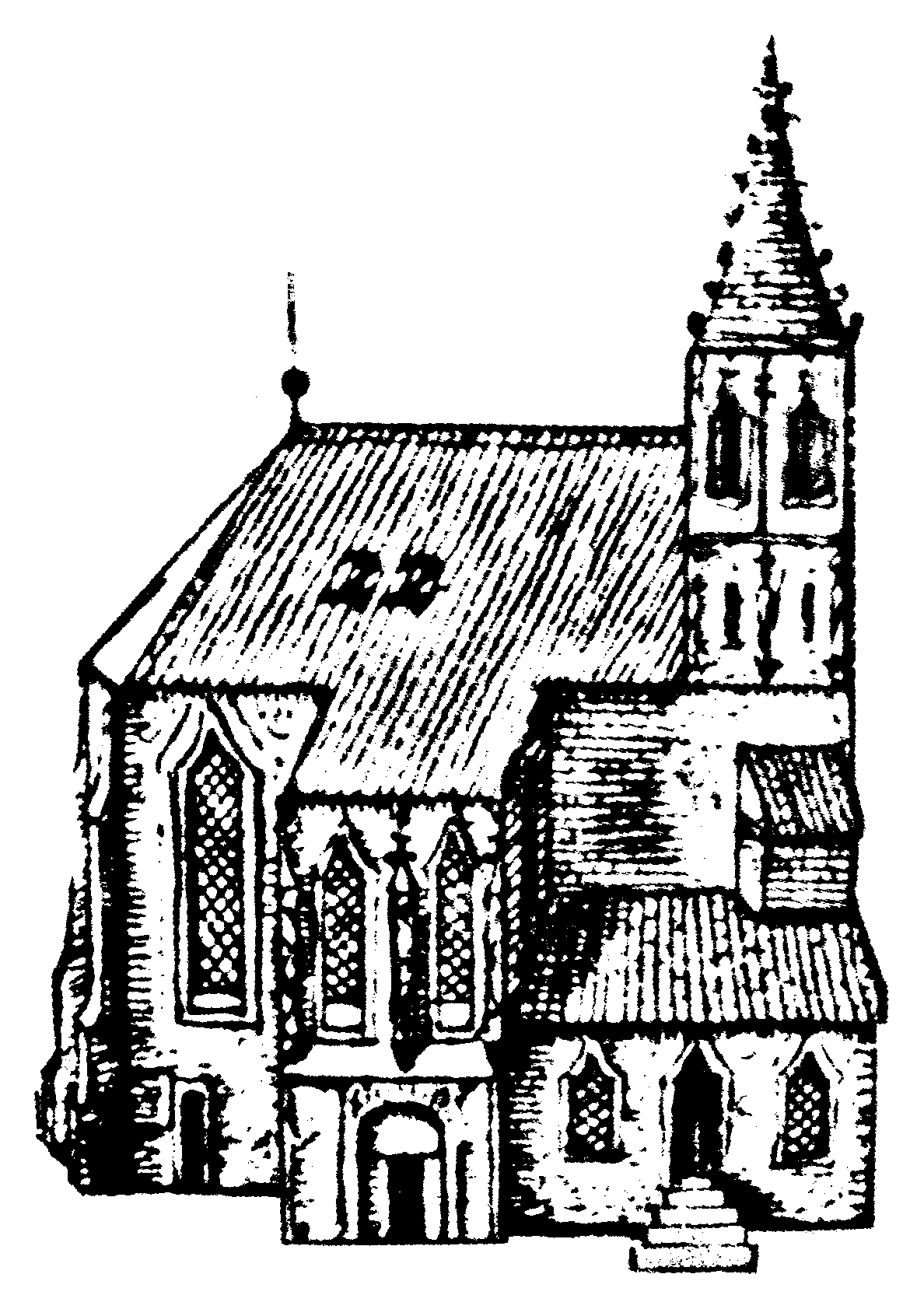- Virgilkapelle
thumb|right">
Sketch of the above-ground Magdalenskapelle, 1609.The Virgilkapelle is an underground
crypt next to the Stephansdom inVienna . It is rectangular in form (approximately 6 meters by 10), with six niches. Today, it lies approximately 12 meters beneath the Stephansplatz.History
The history of the chapel is not entirely clear. The architecture can be dated to the early 13th century. At this time, Frederick the Warlike (1230-1246), the last Duke of the
House of Babenberg , was the ruler of Vienna. It has been hypothesized that the Duke, who would have liked to have established Vienna as anepiscopal see , had the crypt built for St.Coloman of Stockerau , who was to be the patron of the newdiocese . However, the chronicles do not mention the chapel, which has given rise to the speculation that it is the remnant of a failed project.In the year 1307, a burial chapel of the Viennese family Chrannest is mentioned. The chapel was said to have multiple altars, one of which was dedicated to St.
Vergilius of Salzburg .In the Middle Ages, the Stephansdom was encircled by a large cemetery. A single small chapel, which was dedicated to St.
Mary Magdalene (the "Magdalenskapelle"), existed for consecrations andrequiem masses. The Virgilkapelle lay directly underneath this chapel. A vertical shaft connected the two buildings.In 1732, the cemetery around the Stephansdom was closed. The Magdalenskapelle burned out in 1781 and was not rebuilt (presumably as, without a cemetery, there was no need for a funeral chapel). The Virgilkapelle was filled with rubble and faded into obscurity.
In 1973 the chapel was rediscovered during construction of the
Vienna U-Bahn . Today a mosaic showing the outlines of the Virgilkapelle is visible on the Stephansplatz. The chapel itself has survived with hardly any damage and provides the visitor with an excellent glance into the world of the Middle Ages.Location
The Virgilkapelle may be entered directly from the U-Bahn Station "Stephansplatz". It is possible to look into the chapel from above. A collection of historical ceramics has been installed at the entrance to the chapel itself.
ources
This entry is substantially based upon its equivalent at the German Wikipedia.
External links
* [http://www.wienmuseum.at/1391.htm Page on the Virgilkapelle] at the site of the Museum der Stadt Wien (in German).
* [http://leo.skyar.com/stationen/deutsch/atw05.htm The Virgilkapelle] at the spiritual travel guide, "Stationen" (in German).
Wikimedia Foundation. 2010.

